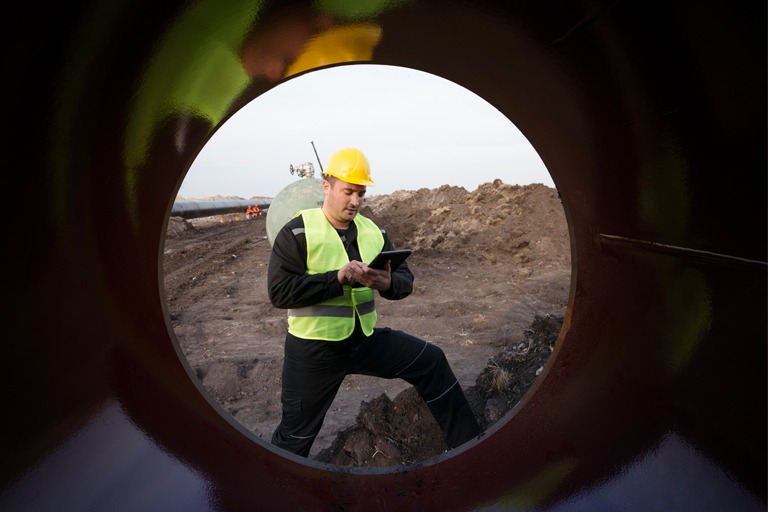Consultancy for Health, Safety, and Environment
Our Health, Safety, and Environmental (HSE) consultancy services help create a safe and secure work environment for your organization. Our HSE consultancy programs offer employees a clear understanding of their responsibilities and adherence to Environmental and safety standards. We equip your employees with the knowledge to identify and mitigate potential risks that could lead to hazardous incidents or adversely impact the environment. Our consultancy services are customized to deliver the best HSE solutions to our clients.


HAZOP (Hazard and Operability Study)
HAZOP study is a systematic way to identify hazards in the system, find causes, consequences and existing safeguards. If the safeguards are not adequate, recommendations are given to mitigate the risk. HAZOP Studies are carried out to identify and evaluate problems that may represent risks to personnel or equipment. This study evaluates the HSE and Business Risks of ‘active’ and ‘potential’ Damage Mechanisms (DMs) to assess and rank the probability and consequences of failure. HAZOP technique is qualitative in nature, and is used to identify deviations from normal safe operation which could lead to hazards, environmental or safety/health concerns and infrastructure and/or operability/maintenance problems, along with appropriate remedial/control measures.
HAZID (Hazard identification)
HAZID is similar to HAZOP. The only difference is HAZOP is carried out on P&IDs and considers only operability hazards whereas HAZID is conducted on various documents and all possible hazards including natural calamities. HAZID Study is a structured and efficient study for providing highly effective hazards identification, when it can be demonstrated that circumstances do not warrant the full rigor of a HAZOP. It is a thorough, systematic, multi-disciplinary team oriented analytical technique and is a systems-oriented technique that examines complete systems or subsystems and relies on structured brainstorming by a team of process experts with supplemental questions from a checklist to ensure comprehensive identification of hazards. HAZID Studies can also be used in conjunction with or complementary to a HAZOP Study.


Quantitative Risk Assessment
Quantitative Risk Assessment (QRA) is a formal and systematic approach to estimating the likelihood and consequences of hazardous events and expressing the results quantitatively as risk to people, the environment or your business. QRA assesses the robustness and validity of quantitative results, by identifying critical assumptions and risk driving elements. QRA studies are typically required for production and processing facilities, high-pressure pipelines, and storage and importation sites, including Liquefied Natural gas (LNG) and they contribute to improved decision-making by highlighting the accident scenarios that contribute most to overall risk.
Qualitative Risk Assessment
The risks which cannot be quantified are categorized under qualitative risk assessment. In this the risk is expressed in terms of low, medium or high-risk levels by benchmarking against Risk Matrix. The systematic identification and evaluation of the likely consequences and expected frequency of hazardous events is a major input to the risk management decision-making process. QRA is usually justified where there is a major personnel or environmental hazard potential, or significant economic implications, or a variety of risk trade-off decisions that need to be made.


Risk Based Inspections ( RBI )
RBI Assesses risk to support the inspection planning. Risk is computed for the relevant pressurized equipment and the failure mode loss of containment, caused by either material deterioration or external influence (such as dropped objects). Risk of failure (RoF) is assessed quantitatively following a two-dimensional risk perspective, comprising the probability of failure (PoF) and the consequence of failure (CoF), and is typically expressed as the product of the two.(Ref API RP 580). Risk-Based Inspection (RBI) assessment services analyze the potential risks of each asset in your facility in their current operating conditions, and then allows users to choose from highly effective to least-effective inspection techniques based on the asset’s anticipated damage mechanism. Risk-Based Inspection (RBI) are conducted in terms of both the probability of failure and the consequence of failure, providing users with a unique view of the condition of each fixed asset in reference to each other.
Reliability, Availability & Maintainability (RAM)
Method of estimating the production availability of a system by assessing failure modes, frequencies and consequences, all the while paying attention to the effect on production. Reliability defines the failure frequency and determines the uptime patterns. Maintainability describes how soon the unit/system can be repaired, which determines the downtime patterns. Availability is the percentage of uptime over the time horizon, and is determined by reliability and maintainability. Reliability, Availability and Maintainability (RAM) study is a structured and quantitative approach implemented for asset optimization and work on the Monte-Carlo principle to significantly lower project costs. Maros is a cost-worthy and basic-level RAM Study Software for reliability engineering studies and reliability modelling to constitute real life scenarios, allowing us to evaluate and enhance production efficiency


Environmental Aspect - Impact Assessment (EIA) Studies
Environmental Impact Assessment (EIA) is the process of identifying, predicting, evaluating and mitigating the biophysical, social, and other relevant effects of development proposals prior to major decisions being taken and projects undertaken. EIAs are conducted in order to acquire an Environmental Authorization. There are two different types of assessments, Environmental Impact & Scoping (EIS) and Basic Assessment (BA), which are used to identify and evaluate the environmental aspects and implement mitigation measures for the Project.
